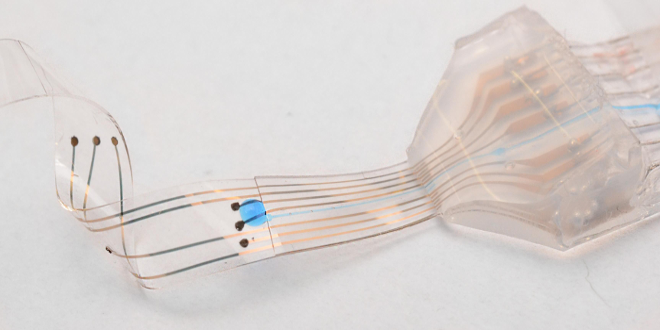Paralysis is a devastating condition for many people. Those suffering from spinal injuries almost never regain the muscle control that they had before the injury. However there may be some hope in sight for those suffering from paralysis. Scientists at the École polytechnique fédérale de Lausanne, a Swiss research institution, have developed a new spinal implant which may be able to treat the condition.
This new implant is called the e-Dura implant, named after the dura mater, a thick membrane surrounding the brain and spinal cord. It is designed to fill in gaps between severed connections in the spinal cord. The implant closely mimics the properties of real nerve tissue, and is able to send out electric pulses. It is also capable of releasing medication into the person's system, which can reanimate injured nerve cells.
Spinal implants have already been developed to treat paralysis, but so far none of them have been suitable for long-term use. As the nerves move and flex, they rub up on the implants causing inflammation. The e-Dura implant is flexible like real nerve tissue, so it can move and flex with the surrounding nerves, rather than rubbing against them. This unique design lets the e-Dura implant succeed where others have failed.
The e-Dura implant has been heavily tested on rats, and the trials were successful. The paralyzed rats were able to regain their ability to walk. The implant also demonstrates its suitability for long-term use. There were no signs of inflammation or rejection of the implant even after two months of use.
Although it has mainly been tested in cases of spinal cord injury, the scientists who developed it believe it has potential to be used for more than treating paralysis, and could also be used to treat epilepsy and Parkinson's disease. So far the implants have only been tested on rats, but they are planning on moving onto human testing very soon, and if no issues turn up during human testing, they can release it for commercial use.
What impact do you think the e-Dura will have on treating people with spinal injuries? Do you think it has potential beyond treating paralysis? Leave your comments below.







